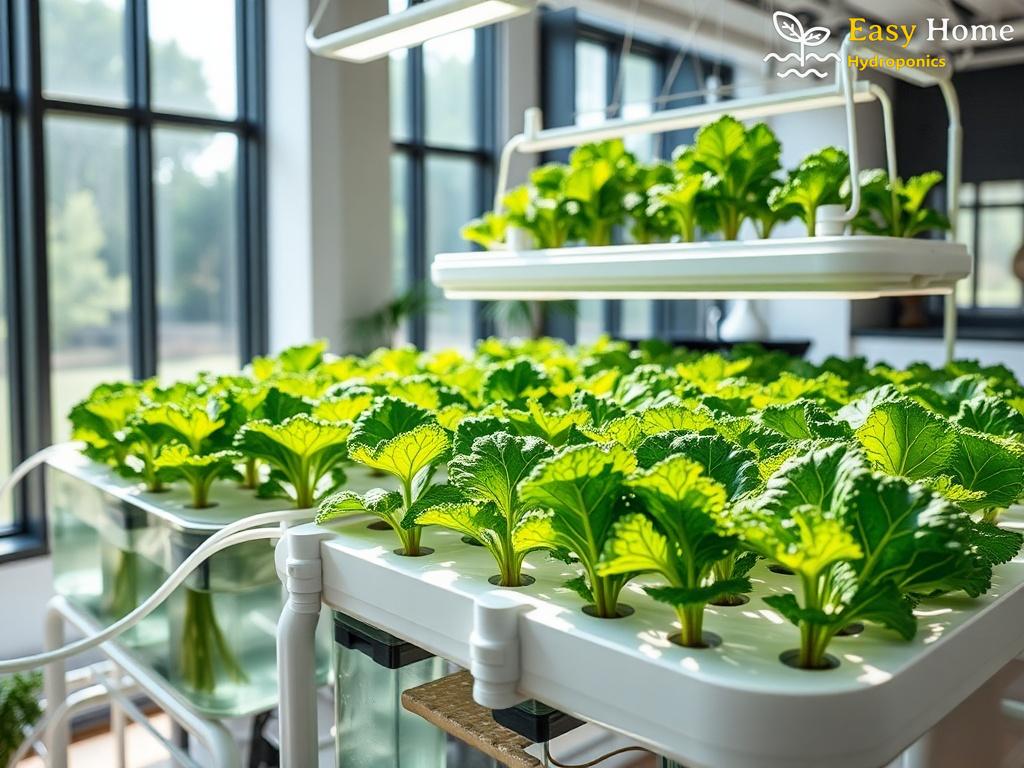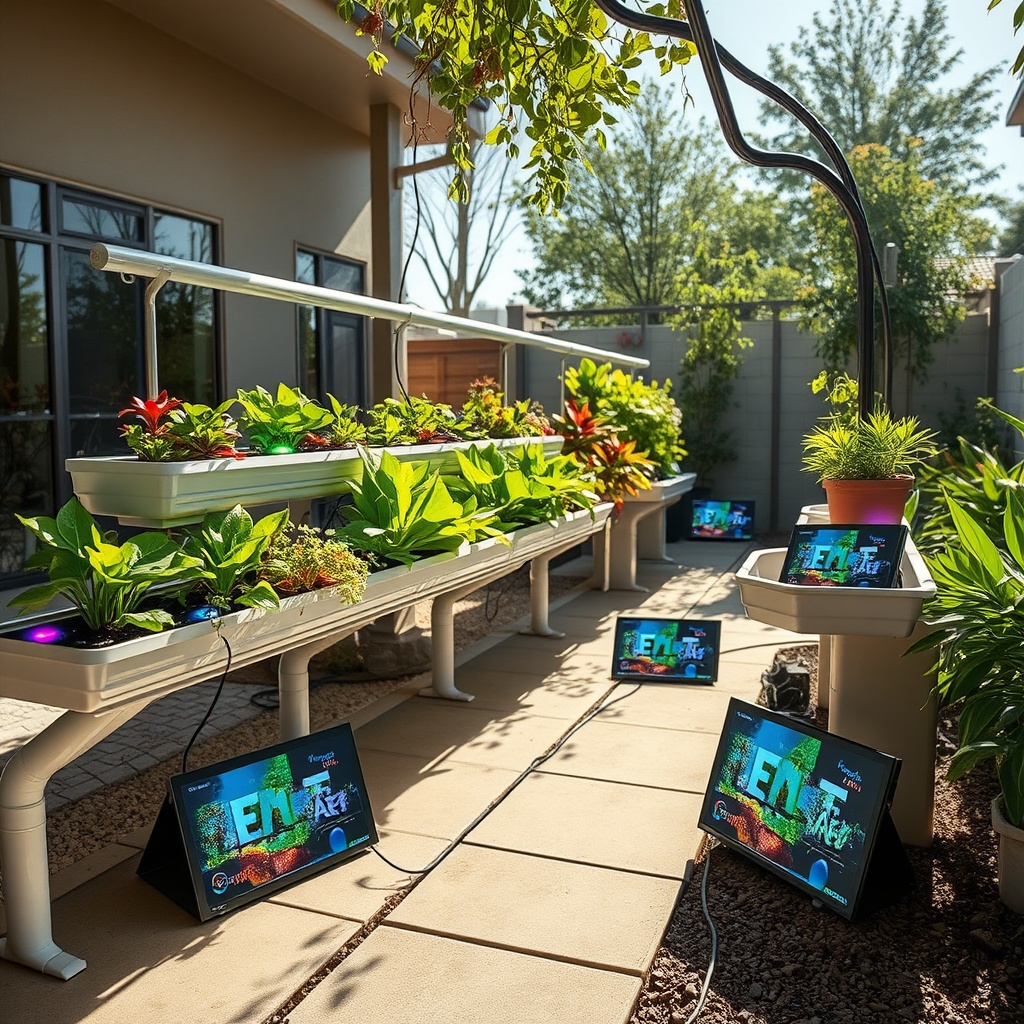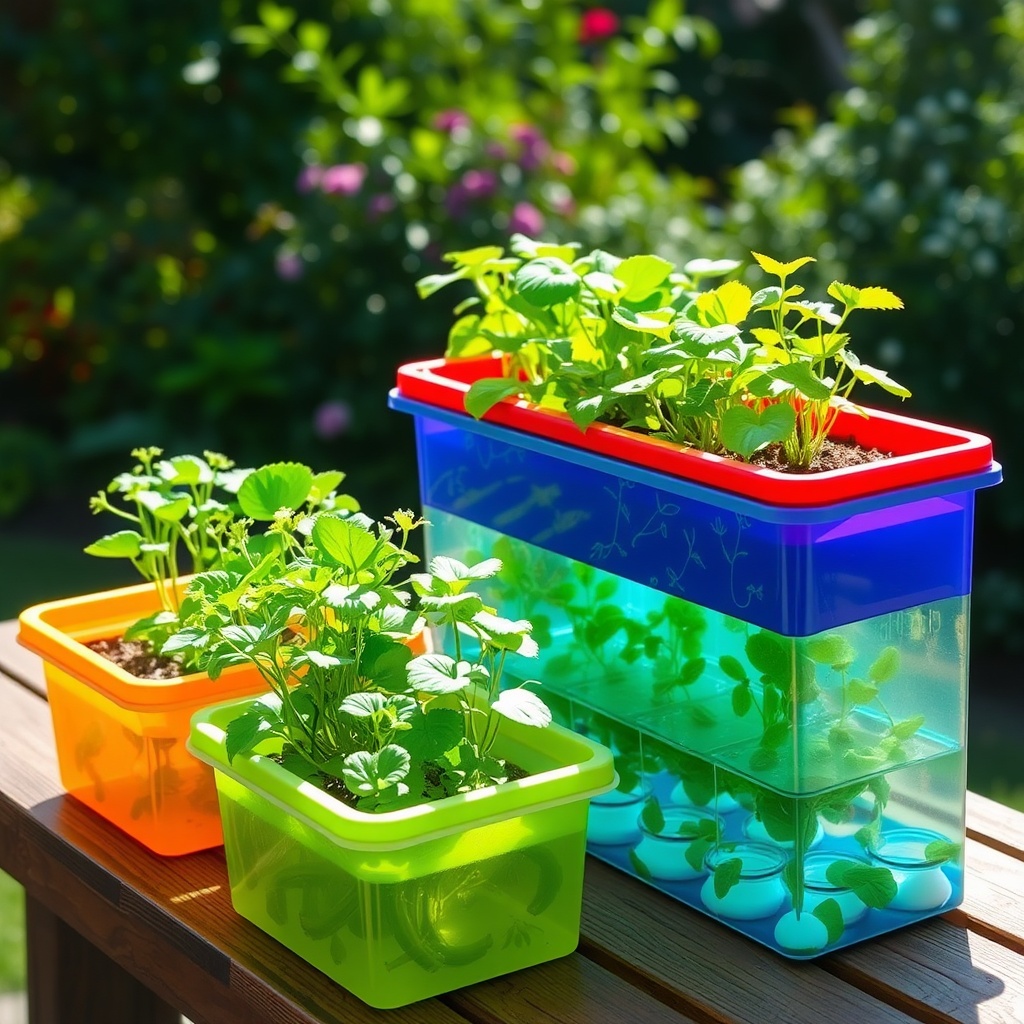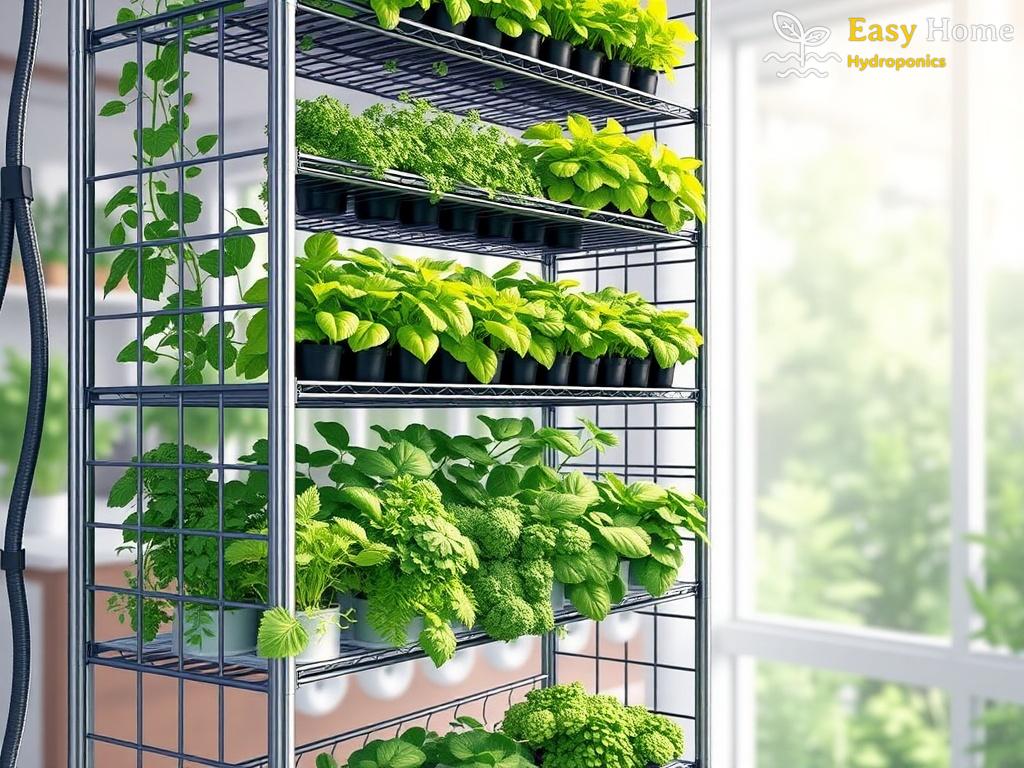The Future of Farming: An Introduction to Hydroponics
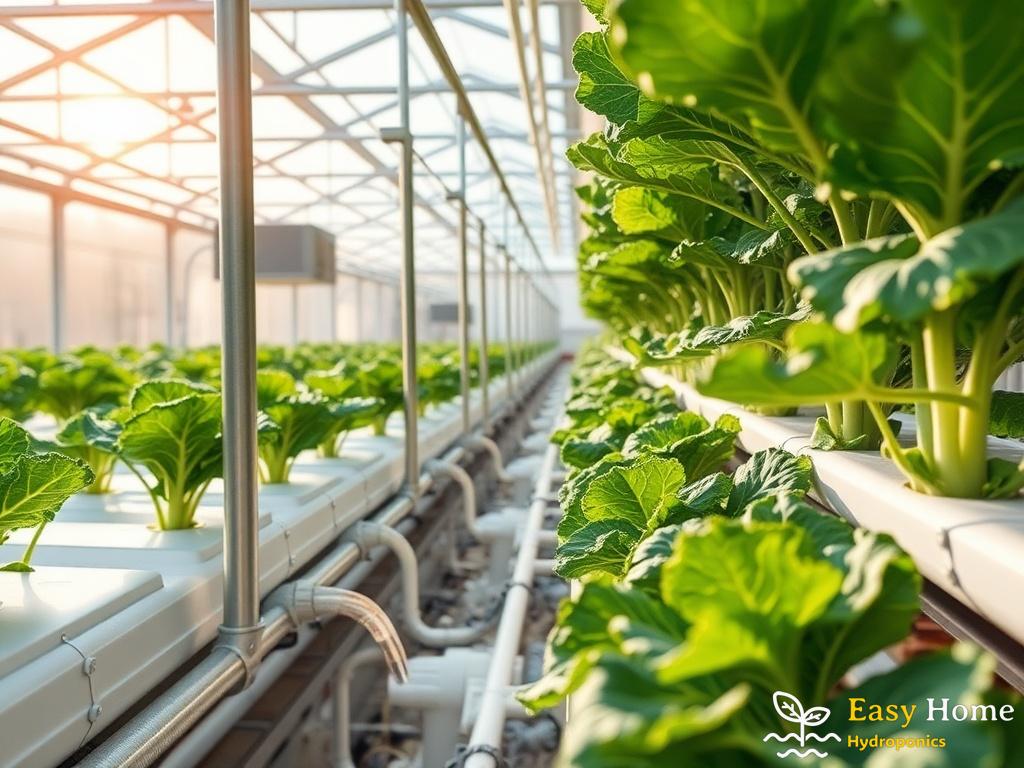
In a world grappling with climate change, urbanization, and the need for sustainable food sources, hydroponics emerges as a beacon of hope. This innovative farming method, which allows crops to grow without soil, is gaining traction as an efficient way to produce food in controlled environments. Gone are the days when agriculture was solely tied to vast fields; the future is here, and it’s sprouting indoors!
Unlocking the Secrets of Hydroponic Systems
Hydroponics, derived from the Greek words ‘hydro’ meaning water and ‘ponos’ meaning labor, is a method of growing plants using mineral nutrient solutions in water. This technique not only conserves soil but also significantly increases crop yield. Let’s explore the various hydroponic systems that make this possible.
- Deep Water Culture (DWC): Plants are suspended in a nutrient-rich water solution, with their roots submerged. This system allows for rapid growth and is perfect for leafy greens.
- Nutrient Film Technique (NFT): A continuous film of nutrient solution flows over the roots, providing them with essential nutrients and oxygen, ideal for fast-growing plants like kale.
- Vertical Hydroponics: This system utilizes vertical space, allowing for the cultivation of multiple layers of crops, maximizing yield in limited areas.
The Benefits of Going Soil-less
Transitioning to hydroponic farming comes with an array of benefits that not only appeal to farmers but also to the environment and consumers alike. The reduction of water usage, the elimination of pesticides, and the ability to grow crops year-round are just a few advantages. Let’s take a closer look at these perks.
| Benefit | Description |
|---|---|
| Water Efficiency | Hydroponic systems use up to 90% less water than traditional farming. |
| Pesticide-Free | With a controlled environment, hydroponic farms significantly reduce the need for chemicals. |
| Year-Round Production | Crops can be grown regardless of season, ensuring a consistent supply. |
Seeds of Change: The Future of Hydroponics
The future of hydroponics is bright, with advancements in technology paving the way for even more efficient systems. From automated nutrient delivery to smart sensors that monitor plant health, innovation is at the forefront of this agricultural revolution. As urban areas continue to expand, the potential for vertical farms and hydroponic greenhouses is limitless, promising a sustainable way to feed the growing population.
Choosing the Right System: Deep Water Culture vs. Nutrient Film Technique
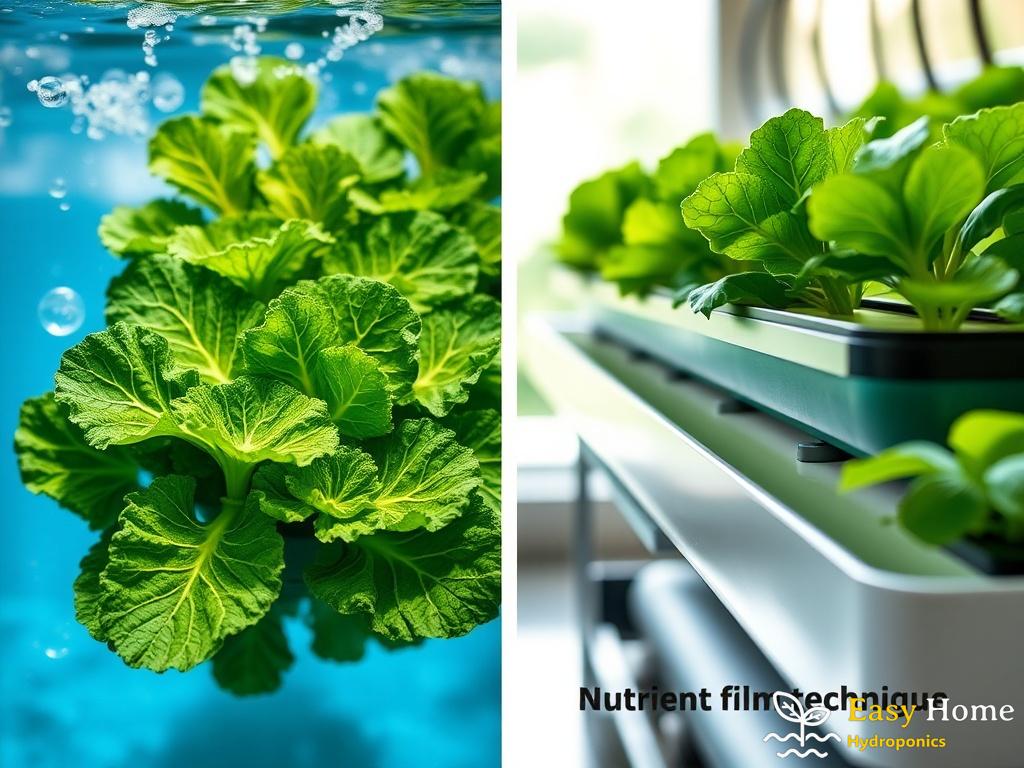
Evaluating the Hydroponic Landscape
As more enthusiasts and commercial growers venture into hydroponics, the choice of system becomes paramount. Among the popular methods, Deep Water Culture (DWC) and Nutrient Film Technique (NFT) stand out for growing nutrient-rich kale. Understanding the nuances of each system can mean the difference between a thriving crop and a disappointing yield. So, how does one determine which hydroponic system is the best fit for kale cultivation?
Deep Water Culture: A Submerged Advantage
Deep Water Culture is an intriguing method where kale plants dangle their roots into a reservoir of oxygenated nutrient solution. This system is particularly advantageous for leafy greens, as it promotes rapid growth and ensures your kale flourishes with minimal fuss. The constant supply of nutrients keeps the plants healthy and vibrant, allowing for impressive yields.
However, it’s not without its challenges. The reliance on a steady oxygen supply is critical; if the air pump fails, the roots can drown, leading to disastrous results. Additionally, DWC systems require consistent monitoring of water temperature and nutrient levels to avoid any fluctuations that may hinder growth.
Nutrient Film Technique: A Flowing Solution
On the flip side, Nutrient Film Technique employs a thin film of nutrient solution that continuously flows over the roots of the plants. This method is renowned for its efficiency, as it uses less water compared to DWC while also providing essential nutrients in a highly oxygenated environment. Kale, with its fast growth cycle, thrives under NFT, making it a favorite among growers looking for swift returns.
Nonetheless, NFT systems can be tricky. The delicate balance of the nutrient film must be maintained; too little flow can lead to nutrient deficiencies, while too much can wash away vital minerals. Growers need to be vigilant and proactive, ensuring that the system operates smoothly at all times.
Comparative Insights: Which Method Reigns Supreme?
So, which method should you choose for your kale-growing venture? Both systems have their merits and potential drawbacks, and the choice often hinges on personal preferences and growing conditions. For those who prefer a more hands-off approach and can manage the oxygenation needs, DWC may be the way to go. Conversely, if you’re drawn to a more active gardening experience that demands constant attention and water efficiency, NFT might suit you better.
| Feature | Deep Water Culture (DWC) | Nutrient Film Technique (NFT) |
|---|---|---|
| Growth Rate | Rapid growth due to constant nutrient access | Quick growth, particularly for fast-maturing greens |
| Water Usage | Higher water retention; requires monitoring | Less water usage, efficient film flow |
| Maintenance | Requires monitoring of oxygen levels | Requires vigilance in nutrient film stability |
| Setup Complexity | Relatively simple setup | More complex due to flow management |
Ultimately, the decision should align with your growing goals and the resources at your disposal. Whether you opt for the submerged simplicity of DWC or the flowing finesse of NFT, both systems offer promising pathways to produce lush, leafy kale that can thrive in any hydroponic environment.
Nutrient Solutions: The Key to Thriving Kale
Understanding Nutrient Solutions for Kale Cultivation
When it comes to hydroponics, the nutrient solution is the lifeblood of your crops, especially for nutrient-hungry plants like kale. This leafy green thrives on a robust mix of essential minerals dissolved in water, providing the necessary elements for growth. Without the right balance of nutrients, even the most sophisticated hydroponic setup can lead to disappointing yields. Therefore, understanding the composition and application of nutrient solutions is crucial for any aspiring hydroponic farmer.
The Essential Components of Nutrient Solutions
Crafting the perfect nutrient solution involves a delicate balance of macro and micronutrients. The primary macronutrients include nitrogen, which promotes leafy growth; phosphorus, essential for root development; and potassium, which aids in overall plant health. Micronutrients, though required in smaller amounts, play vital roles as well. Elements such as iron, calcium, and magnesium are indispensable for kale’s growth, enabling the plant to harness sunlight and convert it into energy efficiently.
To illustrate the importance of these nutrients, consider the following comparative insights:
| Nutrient | Function | Signs of Deficiency |
|---|---|---|
| Nitrogen | Promotes leaf growth | Pale leaves, stunted growth |
| Phosphorus | Encourages root development | Dark green or purplish leaves |
| Potassium | Enhances overall health | Brown leaf edges, weak stems |
| Iron | Essential for photosynthesis | Yellowing between leaf veins |
Creating a Tailored Nutrient Mix
To achieve the ultimate success in hydroponic kale production, growers must be adept at tailoring their nutrient solutions. This involves not only understanding the needs of the plants but also adjusting the concentration of nutrients based on the growth stage. For instance, young seedlings might require a nutrient solution with lower nitrogen levels to prevent excessive foliage growth, while mature plants could benefit from a higher concentration to support robust leaf production.
Furthermore, regular monitoring of the pH and electrical conductivity (EC) of your nutrient solution is key. Kale prefers a pH range of 5.5 to 6.5 for optimal nutrient uptake. By maintaining this balance, growers can ensure that their plants receive the necessary nutrients while preventing potential toxicities. In essence, a well-designed nutrient solution not only fosters kale’s growth but also sets the stage for a flourishing hydroponic system.
Lighting Essentials: Maximizing Growth with the Right Spectrum
In the realm of hydroponic farming, particularly for kale cultivation, light is more than just a source of illumination—it’s a critical factor that can make or break your yield. The right lighting can enhance photosynthesis, accelerate growth, and improve the overall health of your plants. Understanding how to optimize light conditions is essential to creating a thriving hydroponic environment.
Illuminating the Spectrum of Growth is fundamental in hydroponics. Kale, like many leafy greens, relies heavily on specific wavelengths of light to flourish. Plants primarily absorb blue and red light, which play crucial roles in vegetative growth and flowering, respectively. Blue light, at wavelengths around 400-500 nm, encourages compact, leafy growth, while red light, particularly in the 600-700 nm range, stimulates flowering and overall plant development.
The use of LED grow lights has revolutionized hydroponic systems, allowing growers to tailor the light spectrum to their plants’ needs. Unlike traditional lighting, LEDs can be customized to emit specific wavelengths, providing the ideal environment for kale to thrive. Additionally, they are energy-efficient and have a longer lifespan, making them a sustainable choice for hydroponic setups.
| Light Type | Wavelength (nm) | Effect on Kale |
|---|---|---|
| Blue Light | 400-500 | Promotes leaf growth and compact structure |
| Red Light | 600-700 | Enhances flowering and overall growth |
| Full Spectrum | 400-700 | Supports all growth stages |
It’s vital to consider the duration of light exposure as well. Kale benefits from approximately 12 to 16 hours of light per day, simulating natural daylight conditions. This duration can significantly influence the growth rate and yield of the plants. Moreover, incorporating a light schedule that mimics the changing seasons can help in managing the growth cycles of your kale, ensuring that they receive adequate rest periods as well.
Finally, the placement and distance of your light sources play a significant role in optimizing growth. Lights positioned too close can lead to scorching, while those placed too far may result in leggy plants that stretch towards the light. A general rule of thumb is to keep LEDs about 12 to 24 inches away from the plant canopy, adjusting as necessary based on the specific growth stage of the kale.
Troubleshooting Common Issues: Keeping Your Kale Healthy
As you embark on your hydroponic journey with kale, it’s crucial to recognize that challenges may arise along the way. Even the most meticulously designed systems can encounter hiccups that affect plant health and yields. Identifying these common issues and knowing how to address them can make all the difference between a thriving garden and a disappointing harvest.
Signs of Distress: What Your Kale is Trying to Tell You
Kale is a resilient plant, but it is not immune to stressors. Understanding the signs of distress is the first step toward ensuring your kale remains healthy. Pay close attention to the color and texture of the leaves, as they can reveal a wealth of information. For instance, yellowing leaves often indicate nitrogen deficiency, while brown leaf edges may suggest a lack of potassium or water stress.
Furthermore, if you notice your kale plants exhibiting stunted growth or a leggy appearance, it could mean they are not receiving adequate light. Adjusting your lighting setup to ensure optimal exposure can help rejuvenate your plants. Monitoring these symptoms regularly allows you to diagnose issues before they escalate.
Navigating Nutrient Imbalances: The Art of Correction
Another key component to maintaining healthy kale is managing nutrient balance. The delicate interplay of macro and micronutrients is essential for plant vitality. If you discover that your kale is exhibiting poor growth or discolored leaves, it may be time to examine your nutrient solution. Conducting a routine analysis of the pH and electrical conductivity (EC) of your solution is imperative. Kale thrives in a pH range of 5.5 to 6.5; deviations can hinder nutrient uptake.
For instance, if the pH is too high, certain nutrients become less available, leading to deficiencies. Adjusting the pH with appropriate solutions and ensuring proper mixing can restore balance. Additionally, fine-tuning the nutrient concentration based on the growth stage of your kale will provide the necessary elements for robust growth, allowing your plants to flourish.
| Nutrient | Function | Signs of Deficiency |
|---|---|---|
| Nitrogen | Promotes leaf growth | Pale leaves, stunted growth |
| Potassium | Aids in overall plant health | Brown leaf edges, weak stems |
| Iron | Essential for photosynthesis | Yellowing between leaf veins |
Moreover, don’t overlook the importance of maintaining a clean and sterile growing environment. Algae growth in your system can compete for nutrients and reduce oxygen levels, leading to unhealthy plants. Implementing regular cleaning protocols for your hydroponic setup will minimize these risks and promote a healthier growing atmosphere.

